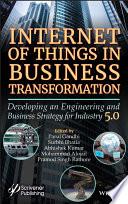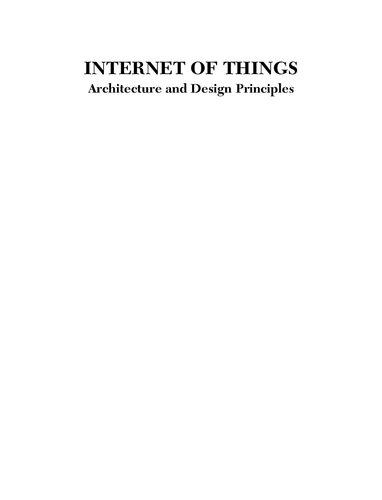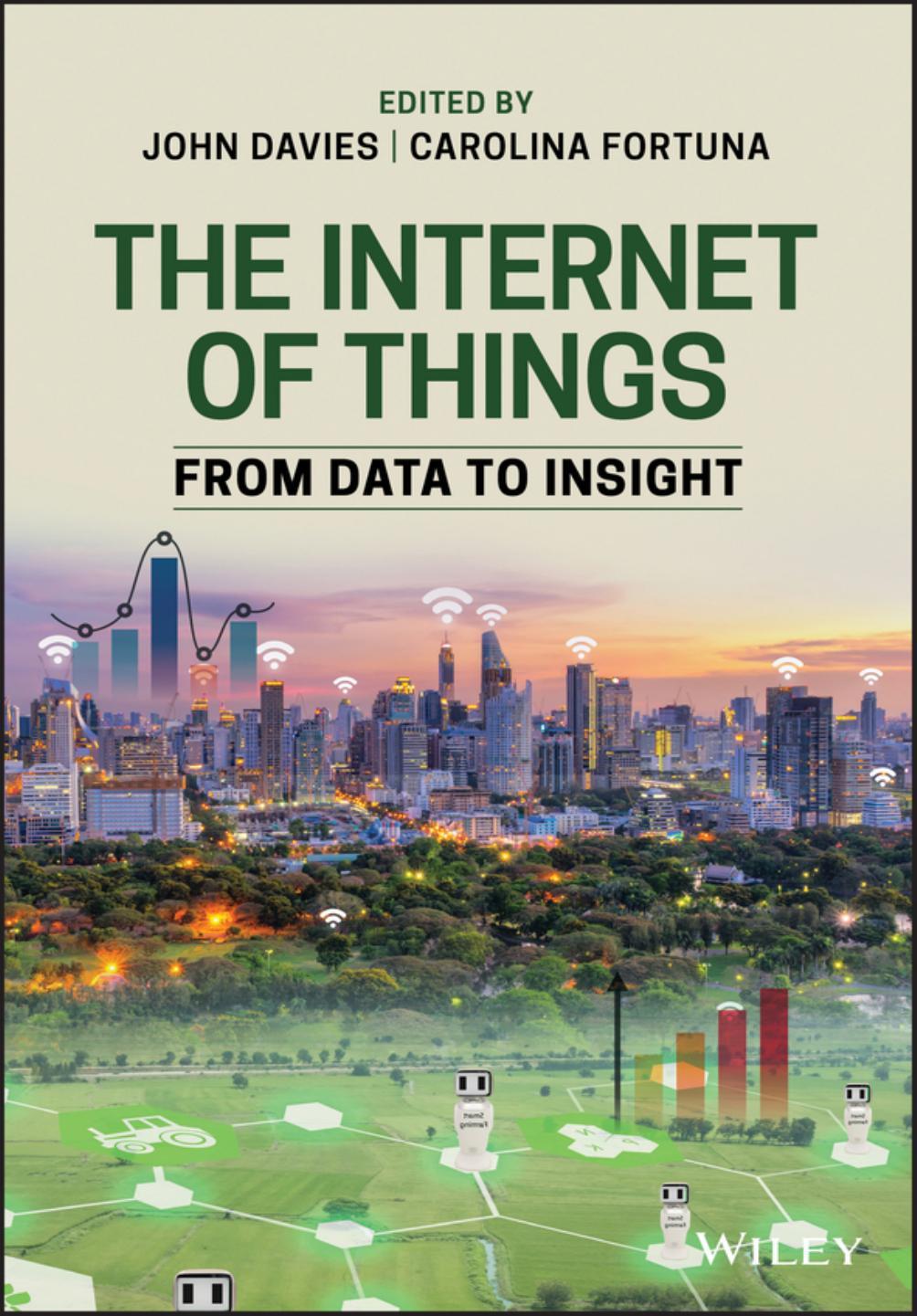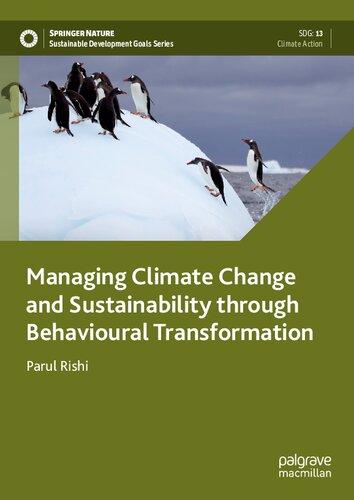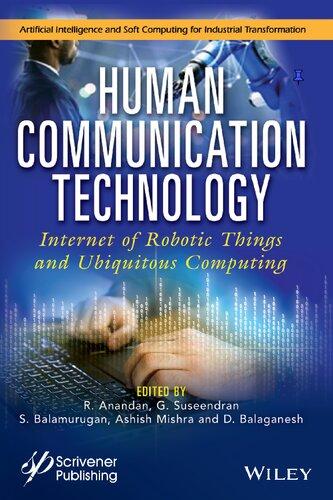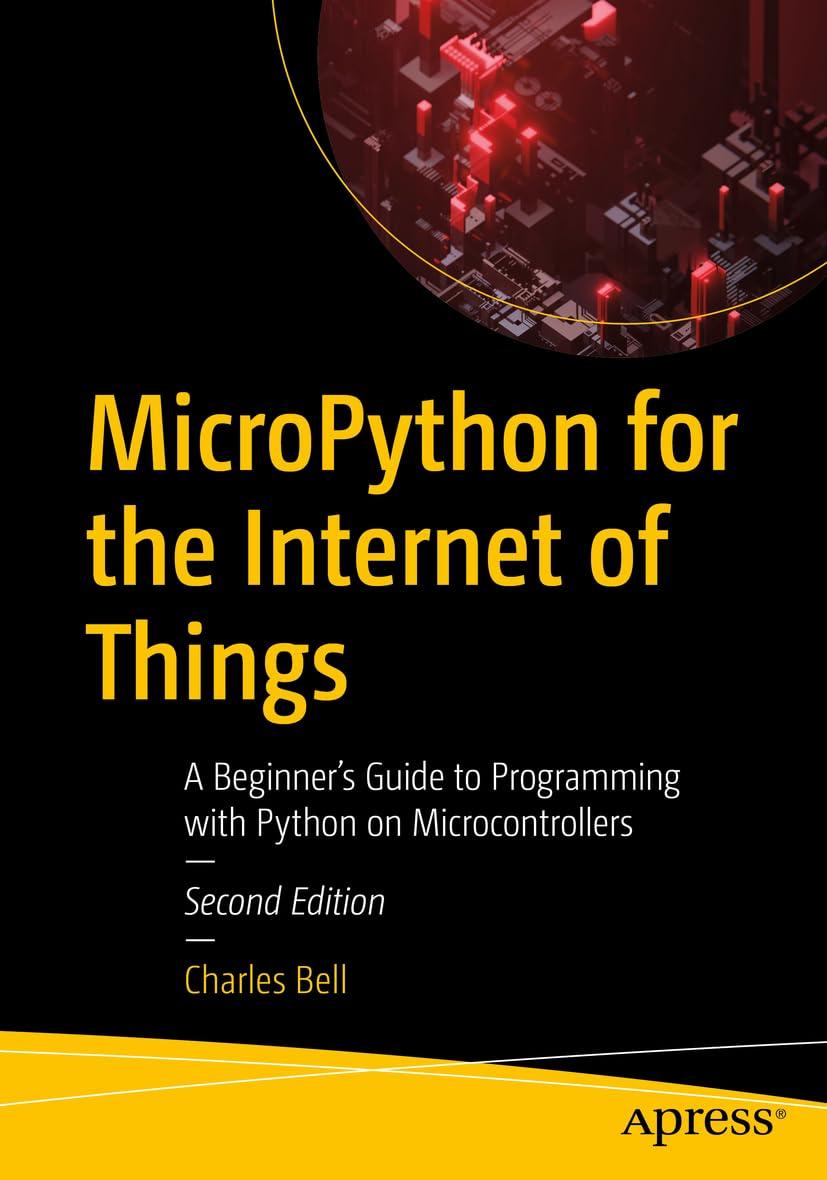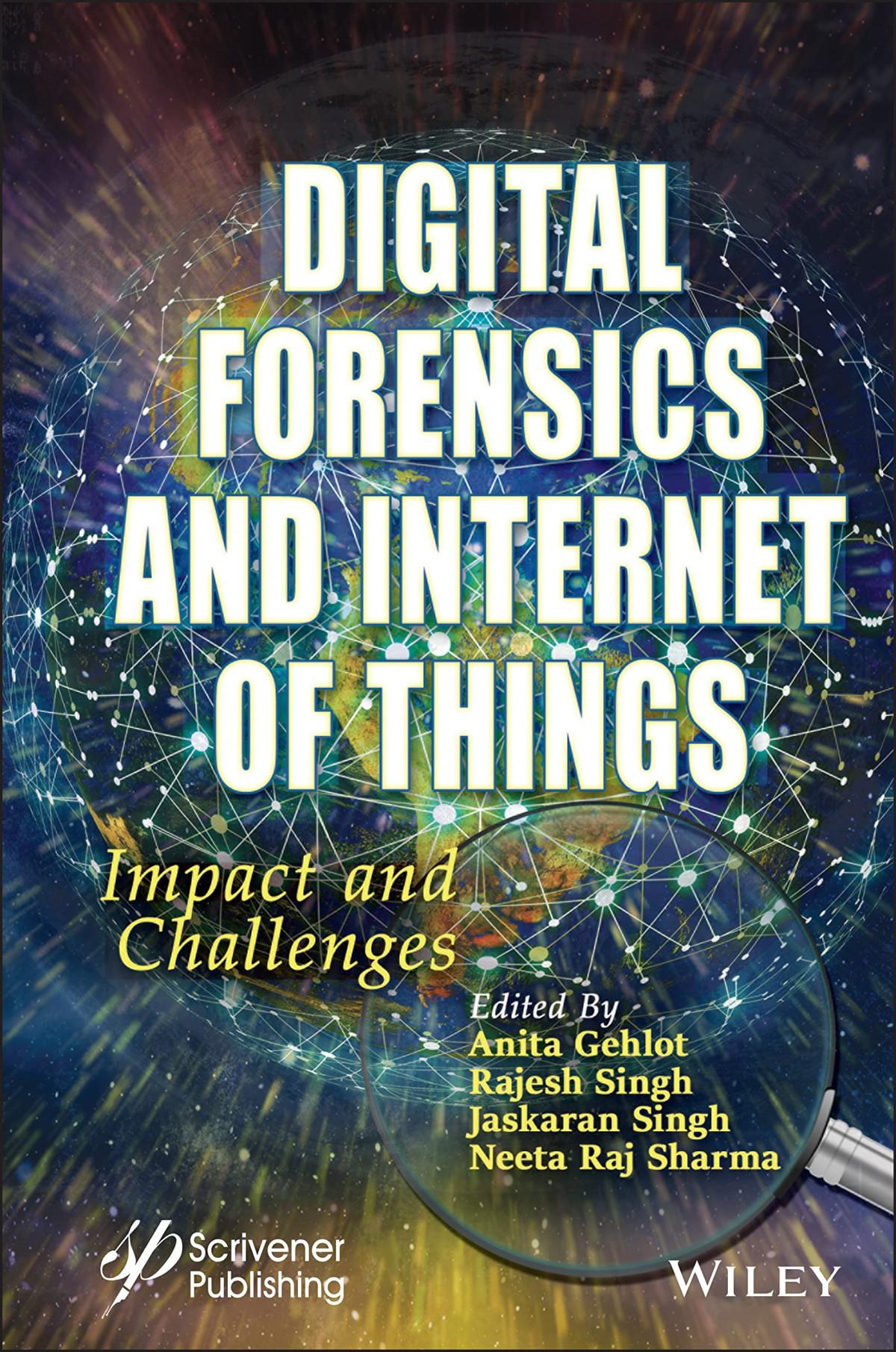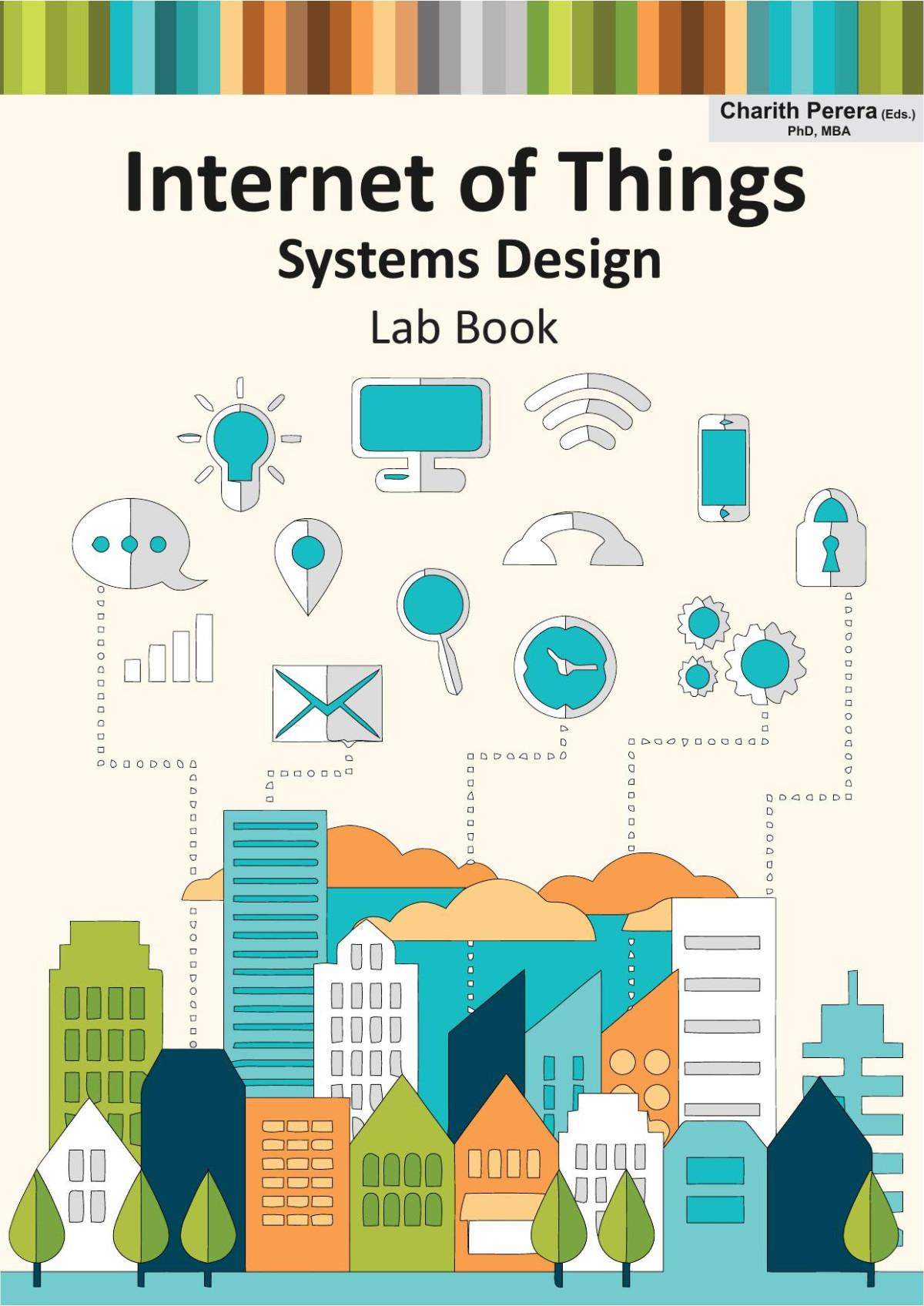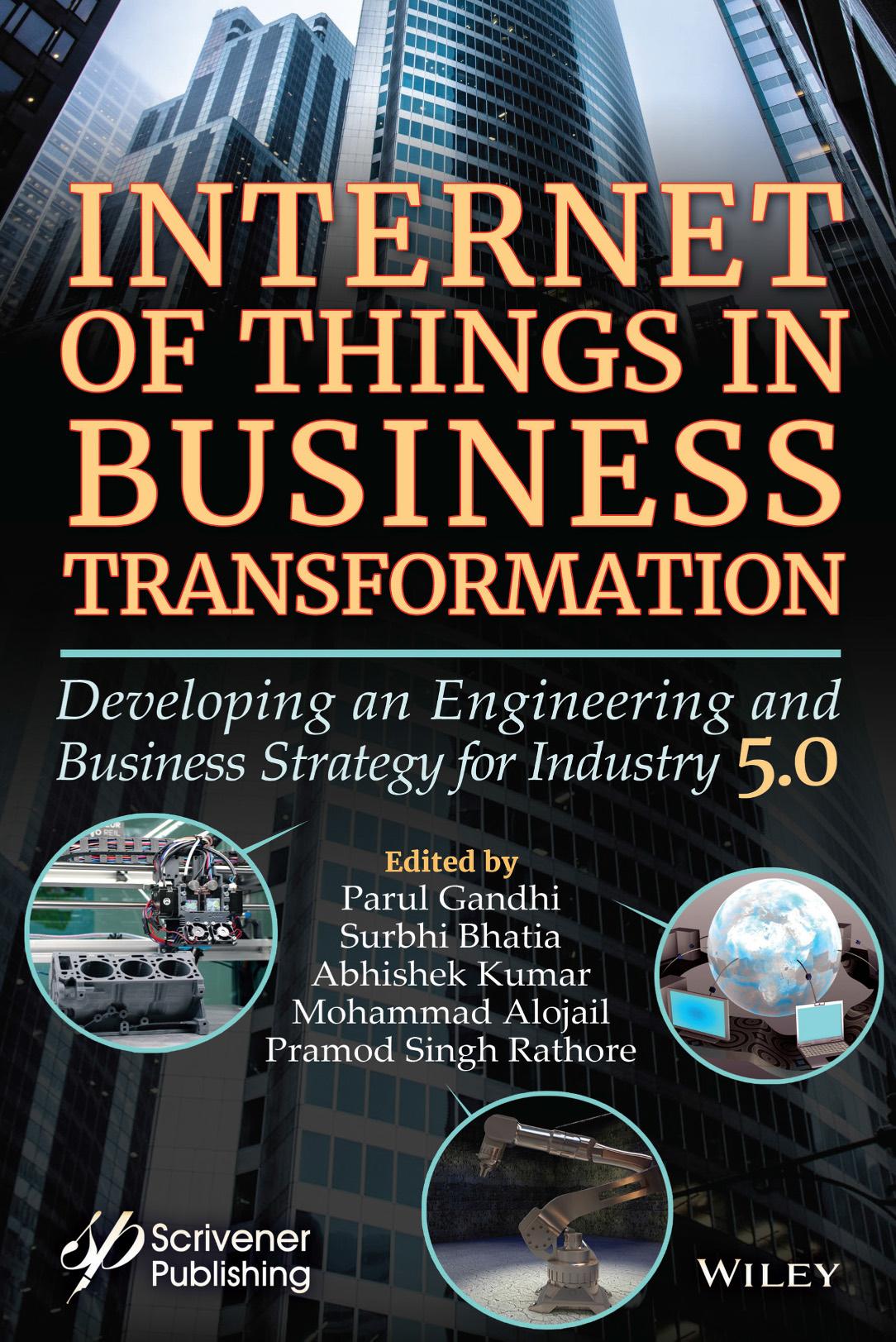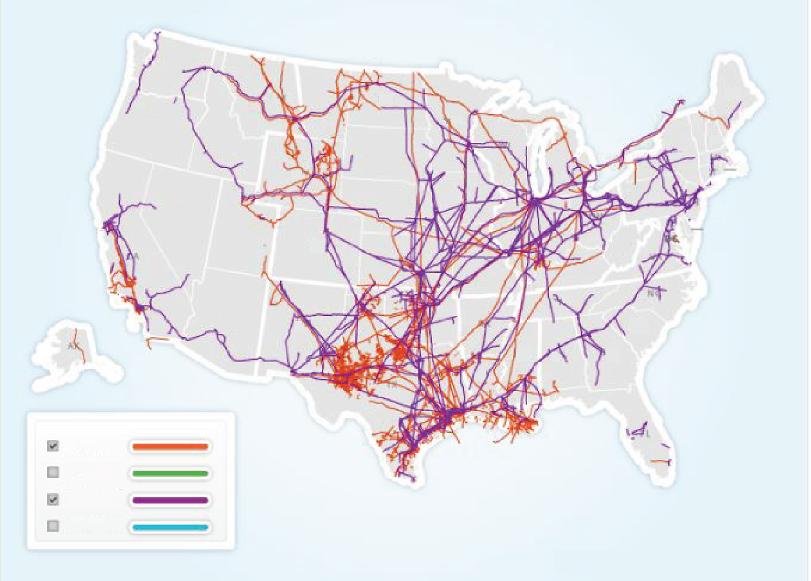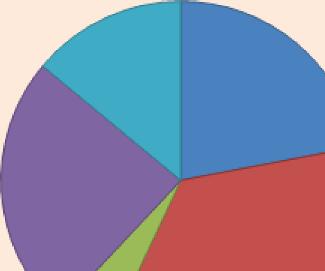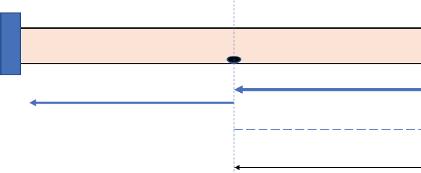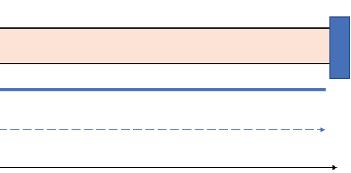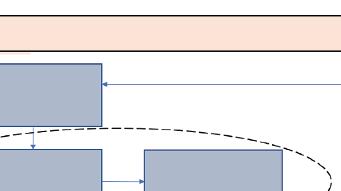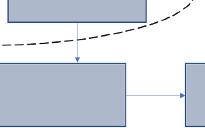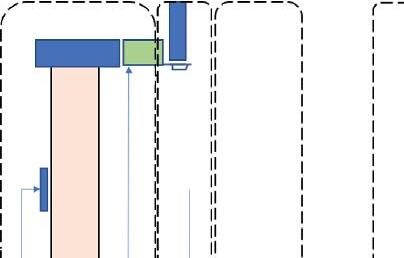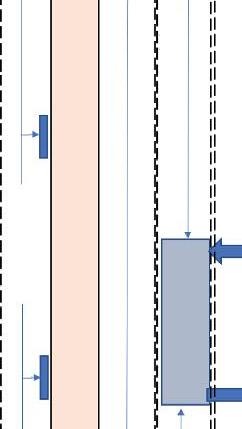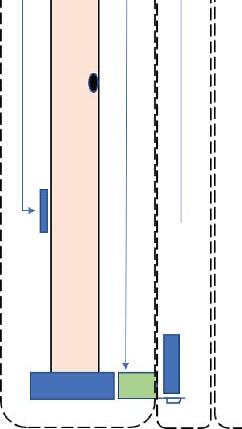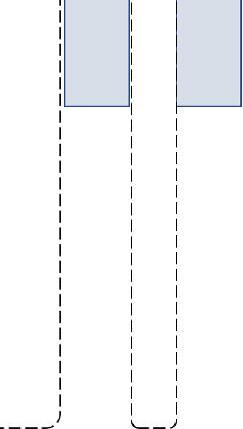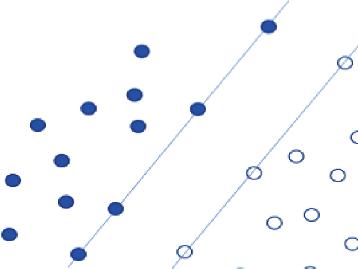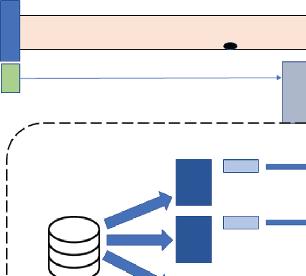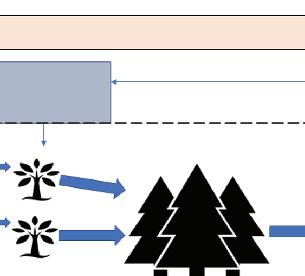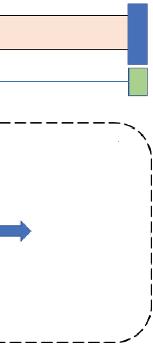Internet
of Things in Business Transformation
Developing an Engineering and Business Strategy for Industry 5.0
Edited by
Parul Gandhi, Surbhi Bhatia, Abhishek Kumar, Mohammad Alojail and Pramod Singh Rathore
This edition first published 2021 by John Wiley & Sons, Inc., 111 River Street, Hoboken, NJ 07030, USA and Scrivener Publishing LLC, 100 Cummings Center, Suite 541J, Beverly, MA 01915, USA © 2021 Scrivener Publishing LLC
For more information about Scrivener publications please visit www.scrivenerpublishing.com.
All rights reserved. No part of this publication may be reproduced, stored in a retrieval system, or transmitted, in any form or by any means, electronic, mechanical, photocopying, recording, or otherwise, except as permitted by law. Advice on how to obtain permission to reuse material from this title is available at http://www.wiley.com/go/permissions.
Wiley Global Headquarters
111 River Street, Hoboken, NJ 07030, USA
For details of our global editorial offices, customer services, and more information about Wiley products visit us at www.wiley.com.
Limit of Liability/Disclaimer of Warranty
While the publisher and authors have used their best efforts in preparing this work, they make no representations or warranties with respect to the accuracy or completeness of the contents of this work and specifically disclaim all warranties, including without limitation any implied warranties of merchantability or fitness for a particular purpose. No warranty may be created or extended by sales representatives, written sales materials, or promotional statements for this work. The fact that an organization, website, or product is referred to in this work as a citation and/or potential source of further information does not mean that the publisher and authors endorse the information or services the organization, website, or product may provide or recommendations it may make. This work is sold with the understanding that the publisher is not engaged in rendering professional services. The advice and strategies contained herein may not be suitable for your situation. You should consult with a specialist where appropriate. Neither the publisher nor authors shall be liable for any loss of profit or any other commercial damages, including but not limited to special, incidental, consequential, or other damages. Further, readers should be aware that websites listed in this work may have changed or disappeared between when this work was written and when it is read.
Library of Congress Cataloging-in-Publication Data
ISBN 978-1-119-71112-4
Cover image: Pixabay.com
Cover design by Russell Richardson
Set in size of 11pt and Minion Pro by Manila Typesetting Company, Makati, Philippines
5
13.2
Preface
The Internet of Things (IoT) has seen phenomenal growth over the last few years. Not only is this emerging IoT paradigm enhancing lives, it also has the potential to impact economic growth. And because IoT enables new insights into the business world, it continues to be very helpful in transforming business strategies and operations. However, before its full potential can be realized, it is necessary to confront several challenges by addressing the issues posed by the IoT and provide technological solutions to them. To help in this mission, many of the powerful features of the IOT and how they can be used to build strategies for a successful business are discussed in this book; and, in order to generate insights into various domains, IOT tools and techniques are also discussed in detail.
This book is written based on many years of teaching and research experience. Our goal is to provide researchers and students a complete package covering the fundamentals of the IOT and how it helps in various domains, its common practice in business and industry as well as all research aspects of IoT applications. Therefore, when choosing a format for a book that would be accessible to both researchers and university students, an attempt was made to simplify the content and emphasize real-life examples to make the information more easily understood.
After reading the entire book, the reader will come away with a thorough understanding of the rapid development of IoT-based systems and their impact on several scientific and engineering domains, including healthcare, smart homes, agriculture, robotics, industries, integration of leak detection in pipeline custody transfer of hydrocarbon products, and many others. Current trends and different architecture domains are explained systematically to motivate those in academia and industry to become familiar with the power of IoT. Also included are the heterogeneous used to enhance IoT security and an explanation of the framework of intelligent spaces needed for IoT-based optimized and secure ecosystem for the energy internet, handled by pervasive computing environment. The chapters thoroughly explain the transformation of business and ways of
addressing its current needs, including how machine learning approaches play a greater role in achieving business intelligence in large commercial organizations, the role of big data analytics with the concept of automation, a roadmap for businesses to leverage big data analytics for creating business value implementing smartness in a smart environment where people are living and making an effort to develop it. Also, an analysis is conducted to examine how human and artificial intelligence might evolve together in future years and how it will impact humans with the help of business intelligence. Finally, this book portrays the difficulties experienced in business development consisting of a self-governing autonomous group setup with resources from both the IT and business advancement side of the organization.
On behalf of the entire editorial board, our heartfelt appreciation goes out to all the authors for considering us to publish their valuable work. Their overwhelming response has been a real factor in keeping us motivated and moving forward with this book, and therefore merits our sincere acknowledgement. The quality and diversity of their contributions have made the book more impactful, and their trust, patience and kind cooperation throughout the various stages of production played a vital role in its success. We also wish to thank the people at Scrivener Publishing for their guidance and support in bringing this edited collection to completion.
The Editors November 2020
1 Applications of IIoT-Based Systems in Detection Leakage in Pipeline Custody Transfer of Hydrocarbon Products
Pragyadiya Das
National Institute of Technology, Trichy, India
Abstract
Custody transfer via pipelines has always been prone to losses due to leakages. Moreover, due to the large lengths of pipelines, leak detection is a tedious task. There are various methods that employ mechanical, mathematical and signal processing based approaches to detect leaks and their location. With the advent of Industrial Internet of Things and Machine Learning, the method of leak detection of pipelines using various machine learning methods have been analyzed and implemented in this chapter.
Keywords: Custody transfer, pipelines, leak detection, industrial Internet of Things, machine learning, ensemble learning
1.1 Introduction
The world of Oil and Gas has been moving at an alarming rate. The world is getting energy hungry [1] and the need for oil (or natural gas) is not going to go down anytime soon [2]. With this increased need for fuel, there is a constant need for the fuel (gasoline etc.) to be transported from one place to another. This gives rise to a need for a medium of transfer that would effectively transport the fuel in a secure and accountable manner.
Email: daspragyaditya@gmail.com
Parul Gandhi, Surbhi Bhatia, Abhishek Kumar, Mohammad Alojail and Pramod Singh Rathore (eds.) Internet of Things in Business Transformation: Developing an Engineering and Business Strategy for Industry 5.0, (1–14) © 2021 Scrivener Publishing LLC
As per data released in India’s official website (https://community.data. gov.in/), the total length of Natural Gas pipelines went from 10,246 to 17,753 km in the period of 31st March 2010 to 31st March 2017. That is a growth of 57% [3]. This is a significant growth and shows the need and increasing utility of pipeline in the energy scenario of an energy hungry nation like India [4].
Similarly, USA has a motor gasoline consumption of about 8,682 thousand barrels per day [4], and has a very significant crude and product pipeline, Figure 1.1 [5] explains this fact.
Looking at pipelines a major method of custody transfer of Gasoline, Diesel and other energy related fuels, it is important that there is proper monitoring of these structures to prevent any kind of adulteration, or more importantly, leakage causing financial losses.
With the advent of Wireless Sensor Networks (WSN) and Internet of Things (IoT), the monitoring of long distance pipelines have now become a task that can be achieved.
Source: American Energy Mapping (AEM) 2013
Figure 1.1 Pipeline mapping—US.
1.2 Industrial Internet of Things
The concept of “Internet of Things” has its core concepts set out as the interconnection of devices that have the capability to talk to themselves and “act” or take “decisions” based on each other’s statuses.
Usage of Industrial grade sensors to monitor industrial processes in real time and later achieving their interconnection is called Industrial Internet of Things.
Modern day refineries and pipelines consist of numerous numbers of sensors. The data that is generated is huge. This poses as a great opportunity to drive data analytics and Industrial Internet of things in this sector [6].
IIoT is the utilization of smart sensors (or actuators) to enhance manufacturing and industrial processes. The idea behind IIoT is intelligent machines are made better humans at capturing and analyzing data in real time, in addition they are also made better at prompting information that can be used to make decisions in lesser time and more effectively [7].
1.3 Pipeline Leaks
Pipelines are undoubtedly the most safe and reliable mode of custody transfer of fuel. Major reasons contributing to pipeline failure are depicted in Figure 1.2 [8].
The below detail explains the varied kind of reasons that are faced while analyzing pipeline leaks.
Reasons for Pipeline Failure
Figure 1.2 Percentage break-up of reasons causing pipeline leaks.
1.3.1 Various Techniques used to Detect Pipeline Leak
The methods that are usually used are divided into two classes,
1. Hardware techniques.
2. Software techniques.
We shall discuss in brief about three of the most common non-analytic and hardware-based technique used in pipeline leak detection. They are as follows:
a) Vapor Sampling Method:
This is the most common method used for detection of pipeline leaks. This is an augmented system that has gas detection and gas ppm measurement systems in it. In this method, a gas detection/measurement unit runs along the line of the pipeline. A representation of the same is below in Figure 1.3.
b) Acoustic Signal Processing [9]:
In this method, the occurrence of the leak is treated as a fault in the wall of the pipe. The pressure difference profile inside a pipeline is usually from a higher-pressure potential to lower-pressure potential, this can be treated as an incident beam of light traveling from one end to the other end of the pipeline. A leak on the pipeline causes a disturbance in the pressure profile that can be seen a translucent substance in the path of the incident beam. Now, based on the time needed for the reflected beam to reach the pumping station,
Figure 1.3 Vapor Sampling method of pipeline leak detection.
the exact position of leak is determined. A representation of the same is given in Figure 1.4.
Since, the speed of sound wave propagation is in a single-phase, rigid pipe is found using the application of law of conservation of mass and comes as,
Here, ν is the wave propagation speed in m/s, ρ is the density of fluid in kg/m3, E e is the Young’s modulus of the piping material in N/m2, K is the bulk modulus of the liquid and ϕ is a factor of restraint based on the Poisson ratio.
c) Fiber Optic Method [10]:
In this method, a helical strain of fibre optic cables runs along the length of the pipeline. The leak that is generated on the pipeline is seen as spikes in the strain profile of the fiber optic cable that is running along the pipeline. This strain profile is calculated using Brillouin Optical Time-Domain Analysis (BOTDA) [11]. BOTDA can be calculated using traditional mathematics and data analysis methods [12].
We shall discuss in brief about three of the most common analytic and software-based technique used in pipeline leak detection. They are as follows:
a) Negative Pressure Wave method [13]:
In this method, the drop in line pressure and speed profile is used to detect the leak, however, in this case, the process is heavily dependent on software techniques rather than
Figure 1.4 Acoustic method of leak detection.
hardware. The pressure wave is captured using sensors positioned in the upstream and downstream of the pipeline. The captured wave is then put through the extended Kalman Filters (EKF), used for non-linear systems to estimate the number of states required to model the pipeline system [14]. Extended Kalman filtering technique is used to estimate the state vectors that contain information about the segment of the pipeline, this combined with the virtual leakage rate gives an expression [15] that accurately derives the point of leak on the pipeline, provided that the initial conditions of the virtual leakage rate and that of the pipeline are same [16]. In addition, techniques like Haar Cascading are also done to do waveguide transformation/decomposition and analysis for detection of leakages [17].
b) Digital Signal Processing:
This method uses process data such as pressure profile, flow profile, strain, entropy in flow, etc. to identify and analysis various features which help in identification and detection of leaks in pipeline systems.
Features such as energy of the signal, entropy of the signal, zero crossings cut and energy distribution in decomposed wavelet is analyzed [18].
Of these, zero crossings cut is the most significant, as it identifies the events where a high value (defined as 1.5 times the mean of the signal amplitude (positives only)) occurs immediately after a 0 or negative value). These features show us spikes in the flow data and which are then run through a Fast Fourier transform (FFT) for signal decomposition and transformation. This transformed signal wavelet or flow data is then run through a Neural Network, that classifies suitable data as leakages.
A representation of the process is given in Figure 1.5.
c) Dynamic Modeling Approach:
This is a method that is gaining popularity with the advancement of our understanding of the usage of classical and modern statistical techniques. We have already discussed the used of states of the fluid flow in the method that used EKF for feature extraction. Using the concepts of Fluid mechanics, the flow can be modelled in terms of partial differential equations, which in turn can be transformed into state space equations, these state space equations are used to determine
the behavior (wave profile, pressure profile, flow profile etc.) of fluid and any disturbance can then be analyzed to detect leakages. In addition, computational fluid dynamics (CFD) is being used to model and detect leakages in pipes.
1.3.2 Use of IIoT to Detect Pipeline Leak
Use of IIoT is gaining popularity with the advent of usage of more connected devices being used in industries day in and day out.
A typical IIoT based unit shall have all devices interconnected with each other. These devices are again connected to a network that terminates at a gateway. The gateway has a two way terminal connecting the analytics block with itself. The analytics block again has a two way terminal connecting it to the rules and controls unit.
In our case the pipeline is the system that has its upstream and downstream connected to each other. The sensors at the upstream, downstream and along the length of the pipeline are interconnected among each other and are also in turn connected to an edge gateway. This gateway connects the system to analytics and transform unit that is used to generate leads for the process. This connection is through an access network, which is typically a network that can handle high volume of uploads and downloads. After this the leads are sent to control unit which based on the leads generate controls or rules for the system, this is again through a network called the service network and has to be able to handle high volume of uploads and downloads.
A representation figure describing the usage of IIoT architecture in detection of leakage in pipeline custody transfer, is given in Figure 1.6,
Figure 1.5 Digital signal processing based pipeline leakage detection.
umping Statio n
Sensor A ssembly Co nnec tivity (Edge)
Sensor s (Edge C onnec ted)
drocarbon Pi peline Inte rconne ct ed sensors
Edge gatewa y
Receiving Statio n
Sensor Assembly C onnec tivity (Edge)
Data Tr ansf orm + Analytics + Le ads
Rules + Co ntrols
Figure 1.6 Industrial Internet of Things-based architecture for pipeline leak detection.
1.3.3
Use of Machine Learning Algorithms to Detect Pipeline Leak
Machine Learning and Data science has gained a lot of popularity in the last decade. In the earlier sections of the chapter, we demonstrated the usage of Neural Networks for detection of leaks in a pipeline, that itself was a pre cursor of introduction of machine learning in the field of leakage detection of pipeline transfer of hydrocarbon. Several machine learning algorithms have started being used for detection of leaks. Advanced techniques such as Neural Networks [19] and Support Vector Machines [20, 21] have already been used and proved to have given excellent results. In addition, more advanced methods employing deep learning and convolutional neural networks [22] are also being explored, in fact application of Variational Autoencoders have already been tested and used. We shall now discuss the technique of implementation of each of these methods (Neural Network and Support vector machine based) in brief, in addition, we shall also try to implement a novel strategy to use ensemble learning algorithms to detect leakages in pipelines [23].
a) Neural Networks-Based Strategy for Detection of Pipeline Leak Detection
The overall architecture of the system is already designed in the section where leakage detection using digital signal processing is explained, in the section a representative system architecture. Here, we only analyze the details of the neural network from a very computational point of view. In the paper 3-layer neural network is used with a sigmoid activation function. In the method, the error is decreased by backpropagation.
b) Support Vector Machines-Based Strategy for Detection of Pipeline Leak Detection
We have already seen the use of negative pressure wave method for leak detection in earlier section. We see that in negative pressure wave method, various computational methods are used to detect the leakage from the huge dataset that contains the leakage information as well as the noise from the pipeline, pipe fittings and environment. Use of these computational methods makes the model very expensive from a computational point of view. Therefore the use of Support vector machines in conjunction with negative pressure wave architecture proposed.
1.7 Use of support vector machine for pipeline leak detection.
A support is used to detect extreme cases—for our case the extreme cases are Leak or No Leak case. This is depicted in Figure 1.7.
The data class is separated by hyper planes that divide both the classes clearly. The hyper planes are also called support vectors.
Negative pressure wave method has pressure information from two different scenarios, one is when there is no leak and the pressure profile is usual and the other is when there is a leakage and the pressure profile has disturbances, support vector machines are used for correctly classifying these data and generating leads for detection of leak.
A representative figure for showing the usage of Support Vector machines for negative pressure wave method is as follows,
1.3.4 Design and Analysis of Ensemble Learning-Based Approach for Pipeline Leak Detection
Ensemble learning is basically the method of taking advantage of more than one model to get the combined prowess of the models to achieve better accuracy of analysis. Due to the complexity of the data that we aggregate from a pipeline system, we may require the usage of multiple classification models to come to the conclusion. While there are various ensemble learning models, we choose random forest classifiers. Random forest classifier is one where we break the actual dataset into various bootstrapped samples
Leak No Leak
Hyperplane -2
Hyperplane -1
Figure
Figure 1.8 Evaluation of random forest classifier for leakage detection.
and bind them with particular features that we want to classify them on. Then we fit these datasets into trees considering selected features only. Then the result that we get from these trees is averaged to get the final result. A representative figure to explain is given in Figure 1.8.
1.4 Conclusion
It is seen from the literature and analysis given in the chapter that there is a lot of work that is being done in the field of combining connected devices with the power of analytics and machine intelligence to make a system that has minimal to zero human interference.
Implementing algorithms to get desired output is a requirement is something that can only be explored through continuous experimentation and testing.
This chapter aims at making the foundation strong for a beginner in the field of Pipeline engineering, Industrial Internet of Things and Machine learning.
References
1. “In an energy-hungry world, natural gas gaining the most”, Amy Harder. Axio.com, June 2019.
2. Pydata 2018 Video (Youtube), Hot Water Leak Detection Using Variational Autoencoder Model—Jay Kim.
3. Na, L. and Yanyan, Z., Application of Wavelet Packet and Support Vector Machine to Leak Detection in Pipeline. 2008 ISECS International Colloquium on Computing, Communication, Control, and Management, 2008.
4. Ibitoye, Olakunle & Shafiq, Omair & Matrawy, Ashraf. (2019). A Convolutional Neural Network Based Solution for Pipeline Leak Detection.
5. Pipeline Stats in India, https://community.data.gov.in/length-of-natural-gaspipelines-in-india-from-2010-to-2017/.
6. Pipeline—data as per plot, https://www.indexmundi.com/energy/?product= gasoline&graph=consumption&display=rank.
7. Where are pipelines located?, https://pipeline101.org/Where-Are-PipelinesLocated.
8. Lim, K., Wong, L., Chiu, W.K., Kodikara, J., Distributed fiber optic sensors for monitoring pressure and stiffness changes in out-of-round pipes. Struct. Control Hlth., 23, 2, 303–314, 2015.
9. Gamboa-Medina, M.M., Ribeiro Reis, L.F., Capobianco Guido, R., Feature extraction in pressure signals for leak detection in water networks. Procedia Eng., 70, 688–697, 2014.
10. US Oil and Gas Pipeline Stats, https://www.bts.gov/content/us-oil-and-gaspipeline-mileage.
11. Definition of IIoT, https://internetofthingsagenda.techtarget.com/definition/ Industrial-Internet-of-Things-IIoT.
12. Bolotina, I., Borikov, V., Ivanova, V., Mertins, K., Uchaikin, S., Application of phased antenna arrays for pipeline leak detection. J. Petrol. Sci. Eng., 161, 497–505, 2018.
13. Adnan, N.F. et al., Leak detection in gas pipeline by acoustic and signal processing—A review. IOP Conf. Ser.: Mater. Sci. Eng., 100, 012013, 2015.
14. Wang, L., Guo, N., Jin, C., Yu, C., Tam, H., Lu, C., BOTDA system using artificial neural network. 2017 Opto-Electronics and Communications Conference (OECC) and Photonics Global Conference (PGC), Singapore, pp. 1–1, 2017.
15. Shibata, A., Konishi, M., Abe, Y., Hasegawa, R., Watanabe, M., Kamijo, H., Neuro based classification of gas leakage sounds in pipeline. 2009 International Conference on Networking, Sensing and Control, 2009.
16. Feng, W.-Q., Yin, J.-H., Borana, L., Qin, J.-Q., Wu, P.-C., Yang, J.-L., A network theory for BOTDA measurement of deformations of geotechnical structures and error analysis. Measurement, 146, 618–627, 2019.
17. Three reasons why Oil will continue to run the world, https://www.forbes. com/sites/judeclemente/2015/04/19/ three- reasons-oil-will-continue-torun-the-world/.
18. Chen, Y., Kuo, T., Kao, W., Tsai, J., Chen, W., Fan, K., An improved method of soil-gas sampling for pipeline leak detection: Flow model analysis and laboratory test. J. Nat. Gas Sci. Eng., 42, 226–231, 2017.
19. Chen, H., Ye, H., Chen, L.V., Su, H., Application of support vector machine learning to leak detection and location in pipelines. Proceedings of the 21st
IEEE Instrumentation and Measurement Technology Conference (IEEE Cat. No.04CH37510), Como, Vol. 3, pp. 2273–2277, 2004.
20. Thorley, A.R.D., Fluid Transients in Pipeline Systems, D&L George Limited, pp. 126–129, 1991.
21. Tian, C.H., Yan, J.C., Huang, J., Wang, Y., Kim, D.-S., Yi, T., Negative pressure wave based pipeline Leak Detection: Challenges and algorithms. Proceedings of 2012 IEEE International Conference on Service Operations and Logistics, and Informatics, 2012.
22. Hou, Q. and Zhu, W., An EKF-Based Method and Experimental Study for Small Leakage Detection and Location in Natural Gas Pipelines. Appl. Sci., 9, 15, 3193, 2019.
23. Peng, Z., Wang, J., Han, X., A study of negative pressure wave method based on Haar wavelet transform in ship piping leakage detection system. 2011 IEEE 2nd International Conference on Computing, Control and Industrial Engineering, Wuhan, pp. 111–113, 2011.
